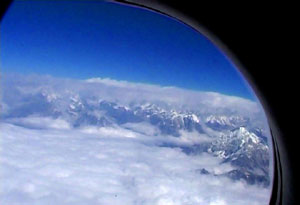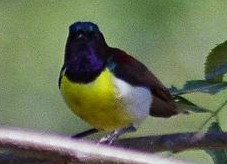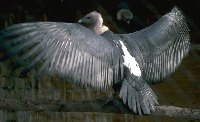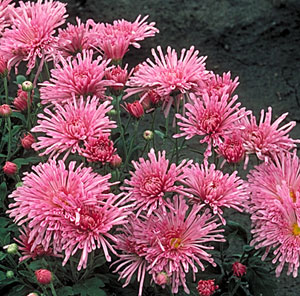Adventure
 'I believe any trip in search of wildlife can be coupled with physical activity and elements of cultural diversity to form a thrilling opportunity ' 'I believe any trip in search of wildlife can be coupled with physical activity and elements of cultural diversity to form a thrilling opportunity '
John H.Eickert |
At certain times of the year and depending on where you are, India can become gripped in heat. The heat moves over the land as if a giant wave. Not a wave of water mind you, but a wave of heat. Fortunately, as with all waves, finally
the wave retreats leaving everyone thankful for the rain, but mindful that the wave will come again. There are places in India where one can rise up out of the heat, just as high ground can protect from a great wave. To stand at the view point above Sandakphu
or much of the Singalila Ridge is to be at such a point. Below you the land, the country can be awash under an intense heat wave, while before you and beyond as far as the eye can see extend green mountain after green mountain in an unbroken vista reaching
the glacial covered Himal. This is the reward from the trek to Singalila Ridge.
 |
The 160 kilometer trek can start from the small village of Manebhanjang at 2134 meters in elevation and 26 kilometers from Darjiling. Along the route, there are trekkers-shelters as well as private trekking lodges. It is also possible
to camp, but due to the nature of the hike, porters would be required to help with the necessary equipment, making the entire adventure more costly and complicated than need be. Personally, I enjoy camping, but here it is better to enjoy the lodges and numerous
tea houses for overnight accommodations and dining.
Leaving Manebhanjang the trekker ascends up to Meghma and then Gairibas. Some of this portion of the trek is along a jeep road. Past Gairibas the track climbs again to the hill town of Sandakphu at 3636 meters. From here, the track remains
high on Singalila Ridge for several days passing the village of Sabarkum and ending at Phalut. The elevation at Phalut is 3600 meters and is perhaps 25 kilometers from Sandakphu. A joyful two days ‘walking in the sky!’
As always, you must descend and the walk down to Rimbick at 2287 meters and then the jeep ride back to Darjiling go quickly. This entire trek is popular, not the trek for those needing solitude, but a wonderful opportunity to meet new
friends. Because of the popularity, there is little wildlife, though the magnolias and rhododendron forests support a wide variety of birdlife. Actually, those who enjoy ‘birding’ may wish to follow this trek in winter as the Singalila National Park shelters
a sizeable migratory bird population at that time of year. Whenever you go be sure and plan your transportation to Manebhanjang and from Rimbick, well in advance.
Waves are not only formed by water. Like water, one can rise above a wave of heat. What better reason to walk the Singalila Ridge? I hope each of you can take the time to do this trek, and of course, when you take the time, take your
time. Cheers.
( Photo by Susan Sharma: View of the Himalayan range from a plane over Nepal )
Note: Singalila National Park is at the extreme northwest of West Bengal and forms the border with Nepal. It is a high altitude protected forest.
Visit http://www.numbum.net or call NumBum Adventurers at 406-777-2228
|
Answers To Quiz Of The Month
This month chattorajd@yahoo.com,kcnatureclub@gmail.com and umang20_s@yahoo.com have given all right answers.
Right Answer toQuiz on Black Buck
|
| 1.The black buck is a/an ……………………….. |
|
| 2.The basic difference between a deer and antelope is the way it sheds and re-grows its ............. |
|
| 3.Black bucks are found in |
|
North India |
South India |
both
|
|
| 4.Black bucks are native to |
|
| 5.This antelope can outrun any animal over long distances |
|
| 6.The average life span of a black buck is…… |
|
12 years |
22 years |
6 years
|
|
| 7.This antelope found in India is related to the springbok and the gerenuk in Africa. |
|
nilgai |
chowsinghe |
blackbuck
|
|
| 8.This community in Haryana, Rajasthan and Punjab fiercely protect the black buck. |
|
Bishnois |
Rajputs |
Maldharis
|
|
| 9.The monthly newsletter of this Society is called “ Black buck”. Which is this Society? |
|
Wildlife Conservation Society |
Madras Naturalists Society |
Bombay Natural History Society
|
|
| 10.This National Park is designated to protect the black buck |
|
Desert National Park, Rajasthan |
Velavadar, Gujarat |
Bandhavgarh, Madhya Pradesh
|
|
Please try this month quiz on
Little Known Wildlife Sanctuaries
|
Common Birds of India
By - Ragoo Rao
The purple-rumped sunbird is a very lovable small bird commonly found throughout the country. As named, the male has glistening metallic crimson, green and purple on the upper parts of the body and yellowish on the lower parts. The female
bird has grayish brown upper body with light yellowish under parts. The male gets a very shiny glistening purple in the breeding season. Both sexes are almost the same size.
 |
Under this glistening, lovable small bird is a very bold and fearless complex, which is shown by the males when nesting is going on. They can be seen in home gardens too, early in the mornings flitting from flower to flower with chikk....chikkk...chikkk
singing in quest of nectar. It is very amusing to find them hanging upside down from flowers as they send their long needle like beak right into the flowers to suck the nectar. Their favorites are the Hibiscus flowers. They relish insects too. One can find
them picking insects air borne when there is a termite migration. They play a vital role in cross-pollination of plants in the course of their feeding.
Nesting
 Seasons are not very well defined. The available source of insect larvae might be playing a role in this, as they bring up the hatch-lings on insect larvae. Only the females build the nest, while the male sits around on a nearby
branch and gives a all clear signal with a characteristic tweee...tweee...sound. The nest is an oblong pouch of soft grasses, insect droppings, cobwebs and pieces of bark, hanging from the tip of a branch or creeper. The entrance hole has a projecting canopy.
Nests are often built in home gardens also. Two eggs of greenish grey with blotches are laid. Only the female incubates while the male stands guard close by on a branch warning her of any approaching threat with an excited Tweek...Tweek...and hopping around
excitedly. The male helps in feeding the young. In about two weeks the hatchlings come out of the nest and linger on to their parents begging for food until they can tend for themselves. Seasons are not very well defined. The available source of insect larvae might be playing a role in this, as they bring up the hatch-lings on insect larvae. Only the females build the nest, while the male sits around on a nearby
branch and gives a all clear signal with a characteristic tweee...tweee...sound. The nest is an oblong pouch of soft grasses, insect droppings, cobwebs and pieces of bark, hanging from the tip of a branch or creeper. The entrance hole has a projecting canopy.
Nests are often built in home gardens also. Two eggs of greenish grey with blotches are laid. Only the female incubates while the male stands guard close by on a branch warning her of any approaching threat with an excited Tweek...Tweek...and hopping around
excitedly. The male helps in feeding the young. In about two weeks the hatchlings come out of the nest and linger on to their parents begging for food until they can tend for themselves.
( Photographs -male sunbird, female on nest, by Ragoo Rao)
|
Endangered
-Shivani Thakur
 Vultures have been part of our culture from time immemorial. The famous "Jatayu"of the epic Ramayana who gives up his life trying to save Sita from clutches of Ravana belonged to the vulture family. Or the cunning creatures in the
animated version of The Jungle Book by Walt Disney, were also vultures. Vultures have been appraised as well as looked down upon by mankind. Their small heads devoid of any feathers, in comparison to their bulky bodies scavenging on dead are frowned upon by
old and feared by young. Vultures have been part of our culture from time immemorial. The famous "Jatayu"of the epic Ramayana who gives up his life trying to save Sita from clutches of Ravana belonged to the vulture family. Or the cunning creatures in the
animated version of The Jungle Book by Walt Disney, were also vultures. Vultures have been appraised as well as looked down upon by mankind. Their small heads devoid of any feathers, in comparison to their bulky bodies scavenging on dead are frowned upon by
old and feared by young.
In India there are over 10 species of vultures. Of these the three most common are the Indian White- backed Gyps bengalensis, Indian Long-billed Gyps indicus and Slender-billed Gyps tenurostris. These three are also on the Schedule 1
of The Wildlife Protection Act. The reason behind this is their declining population.
Vultures feed on carcasses. The animals are dosed with veterinary Diclofenac, a standard painkiller. The diclofenac converts into large amount of uric acid, which larger animals can withstand safely. But in vultures causes toxic anal failure also known as "drooping
neck syndrome". This has resulted in a sharp decline of vulture population by over 97% from 1992 to 2003.
The Bombay Natural History Society (BNHS)first conducted its study at the Keoledeo National Park whereupon the rate of decline in Indian white backed vultures was 99.7% A study conducted by Dr.Rhys Green of the Royal society for the
protection of Birds indicated the decline in India, Pakistan and Nepal due to diclofenac poisoning. The earlier theories of viral or bacterial diseases were ruled out after intensive examination of dead birds.
The concern for declining population has bothered not only the conservationists but also the Parsi community. The Parsi community depend upon birds of prey to dispose of dead bodies. In the Tower of death the bodies are exposed to natural
element, the sky. Earlier it happened speedily but because of fewer vultures the system is slowing. The environmental damage is also an area of concern. The absence of scavenger birds would result in the outbreak of TB, anthrax and foot and mouth disease.
Vultures will be replaced by less favoured scavengers like rats and dogs. Diseases spread by them have become rampant in India.
The good news is that Natonal Board for Wildlife chaired by Prime Minister Dr. Manmohan Singh on March 17 2005 approved the phasing out of this painkiller and replacing it with non- lethal substitutes. BNHS on its part has opened
a vulture captive care center ,on the footsteps of the captive breeding of Californian Condor, in Pinjore (Haryana) and plan two more centers in Himachal Pradesh and West Bengal. Till then we can take pride in the only wild habitat of these birds in Chitalayam
forests inside the Wayanad Wildlife Sanctuary in Kerala which is known as the Valley of vultures. The survival of these majestic birds is an example of least interference of humans as they feed on wild animals who have not been exposed to the painkillers.
But the question remains whether all these efforts would be in time to save them. Or is it too late, as Peregrine Fund has warned that "their loss has important economic, cultural and human health consequences".
|
News and Views
News……..
Is environment education just one more “subject” compulsorily introduced in schools? One more heavy book for the students to carry in their schoolbag? On 18 th of July our chat room was host to a few passionate people who thought otherwise.
Read the chat transcript for the month by clicking here.
http://www.indianwildlifeclub.com/chat/chat-archive.aspx?cid=27
News about environment and wildlife is claiming more and more media space in important dailies, but very often these reports get relegated to the inner pages and get missed out by the average reader. News items in “Press This Week” are
carefully selected and summarized by Anuradha Sharma to keep us updated on important developments even if one has missed the report when it appeared in the newspaper. We have, from this month on, started making available the archived issues of “Press This
Week” along the current one.
With the increase in content and additional space requirements this entails, the cost of maintaining IndianWildlifeClub.com is on the rise. We would like to appeal to all registered members who can afford it, to convert their membership
into premium membership. As you are aware, premium membership gives access to the archives ofall our e-zines, quiz programs and online chat transcripts since inception of IndianWildlifeClub.com, in an easily searchable form. And of course
all premium members are eligible to a discount of 20% on purchases atWildscapes.net
And Views……………
“A conservative UNDP estimate pegs environmental damage in India at US$ 10 billion (Rs 42,000 crores) annually, accounting for 4.5 per cent of gross domestic product. According to a recent World Bank report, with India losing a whopping
$ 13,758 million (about Rs 57,784 crores) every year on account of environmental degradation, overall annual expenses due to poor environmental conditions in the country stripped 6.41 per cent of the gross domestic product (GDP). It's time India realised that
what's good for the environment could be good for the pocketbook.”
-Priya Florence Shah
|
Story Of The Month
( continued from last e-zine)
-Saraswati Kavula
 On our way back to the main road, we found a board that read, "Police in your service - Gangapur Road". We were surprised to see that sign. Amjad our jeep driver told the story, "Some two years ago, a naxalite came to this village
looking for shelter. The villagers thought he was a dacoit and started to beat him up. He pleaded with them saying that he was a naxalite and not a dacoit. But the villagers thrashed him and handed him over to the police. The police recognized him as a wanted
Naxalite and were very happy. The villagers gave a statement saying that the man was a dacoit and not a naxalite. Anyways, the police were happy and constructed this road for the villagers. Until that time this village had no proper access from the main road.
The village did have a road earlier many decades ago, but it had been cut-off after the construction of the Kadam Reservoir. So now they have a road, thanks to that incident of mistaken identity." On our way back to the main road, we found a board that read, "Police in your service - Gangapur Road". We were surprised to see that sign. Amjad our jeep driver told the story, "Some two years ago, a naxalite came to this village
looking for shelter. The villagers thought he was a dacoit and started to beat him up. He pleaded with them saying that he was a naxalite and not a dacoit. But the villagers thrashed him and handed him over to the police. The police recognized him as a wanted
Naxalite and were very happy. The villagers gave a statement saying that the man was a dacoit and not a naxalite. Anyways, the police were happy and constructed this road for the villagers. Until that time this village had no proper access from the main road.
The village did have a road earlier many decades ago, but it had been cut-off after the construction of the Kadam Reservoir. So now they have a road, thanks to that incident of mistaken identity."
After a short break at the tea shop on the main road, for breakfast, we moved on to the bamboo forest on the other side of Jannaram. There was a machaan there, but only it did not seem like the traditional machaan. 'We had made a structure using bamboo and
thatch, but now the forest department has made a permanent structure' Asif said. The look of the concrete block which looked like a mini-apartment block in the middle of the forest looked like an eye-sore inside that beautiful forest. 'This is typical tiger
habitat', Asif mentioned indicating the bamboo forest.
The machaan faced a watering hole or what seemed like one…it was a forest stream but looked totally dried up. 'This is a very common watering hole, many times we spotted the tiger here', Imran mentioned. 'Look, there is the pug marks,
the tiger must have come to drink water here some time ago', Pranay called out. Akhil went in for a closer examination, 'no, that doesn't seem like tiger marks, more like the panther, see the paw size is much smaller'. We found another set of marks, that of
an animal which must have dug deep into the sand looking for water. 'This is only January and already there is no water, god knows what will happen to the animals in the summer!' One of them remarked. Very cautiously we went to the middle of the stream which
had some rocks. We found wet sand. Imran sat down and started to take out the sand, 'see there is water just below the surface. If only the forest department people tried to de-silt this stream, the animals would not have to suffer'.
 Then we got an idea, we found one small left out bucket and some tree barks, and some of us started to dig which others began to make bunds with the sand taken out from the pit and some others collected stones and tree barks to keep
the bunds intact. Soon, a small pool of water was made and the tree barks and stones were used to make bunds and keep the sand from falling in. "This water will be enough for at least ten days for the animals. I am so happy and feel I have earned some good
will from god!' Imran beamed. That was an occasion for taking pictures, so all of us gathered around the little pool and took some photographs. Then we got an idea, we found one small left out bucket and some tree barks, and some of us started to dig which others began to make bunds with the sand taken out from the pit and some others collected stones and tree barks to keep
the bunds intact. Soon, a small pool of water was made and the tree barks and stones were used to make bunds and keep the sand from falling in. "This water will be enough for at least ten days for the animals. I am so happy and feel I have earned some good
will from god!' Imran beamed. That was an occasion for taking pictures, so all of us gathered around the little pool and took some photographs.
Soon it was time to leave, and we left the forest picking up all the plastic and paper trash left by unthinking picnickers. "The animals eat these papers and plastic not knowing what it is. The plastic kills them and the chemicals in the paper give them disease',
Pranay remarked. We reached our dormitory and after packing our bags and lunch at the Udupi hotel in Jannaram, took the 1.30 bus back to Hyderabad wondering what will happen to the forests and the animals if things continued the same way.
( Photographs-Pugmarks by Asif Siddiqui. Trekking team by Akhil)
|
Zoo
|
 Ms.Promila Chaturvedi is a freelance landscape designer whose organization "Gardens India" undertakes a number of projects in landscaping and gardening. Ms.Promila Chaturvedi is a freelance landscape designer whose organization "Gardens India" undertakes a number of projects in landscaping and gardening.
|
 By the end of June or beginning of July when weather conditions become less harsh and some moisture comes into the atmosphere, chrysanthemums are propagated for the coming season. By the end of June or beginning of July when weather conditions become less harsh and some moisture comes into the atmosphere, chrysanthemums are propagated for the coming season.
How to prepare the pot
Take a large pot. Fill it with soil and soil conditioners. The top two inches should be filled with sand. Then water it. The soil conditioner should have one part bio-manure/cow-dung manure/farmyard compost, one part bone-meal, one part
neem-cake. In a pot fill two part soil and one part soil conditioners.
How to prepare new plants
For making new plants two methods are followed—
- By root division – here root is divided and the plants are put directly in ten inch pots.
- By cuttings—in this method cuttings are taken from the softer part of the plants. It should be approximately 2.5inches in size. They should be dipped in the rooting chemical rootex No.2, which is used to develop root system in soft cutting, and put in the
large pot which has been kept ready for the purpose.
Stake the pot on all sides and cover it with polythene from top and tie it. Keep it in filtered light. Remember that the pot should not get dry nor it should become slushy. It should remain moist. In two week’s time cuttings should be
ready.
Ten-inch pots should be kept ready for plating the rooted plants. Once roots are developed take out the cuttings without damaging the roots and plat them in final pots and water them. For first few days keep the newly planted pots in
filtered light slowly keep them in full sun.
When to look for buds
By mid October buds will appear. Start liquid feed once a week. When the buds show colour stop feeding them. As the plants grow stake them to keep the flower head erect and intact.
There are many varieties available in the market. Select according to your need and liking- large flower head or bedding varieties which can also be grown in pots as spray flowers.
|